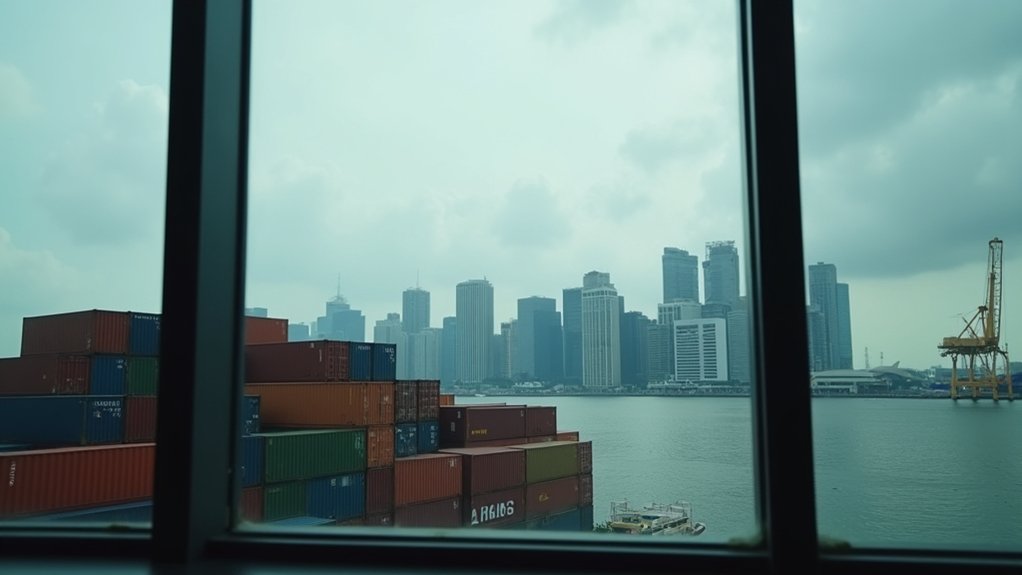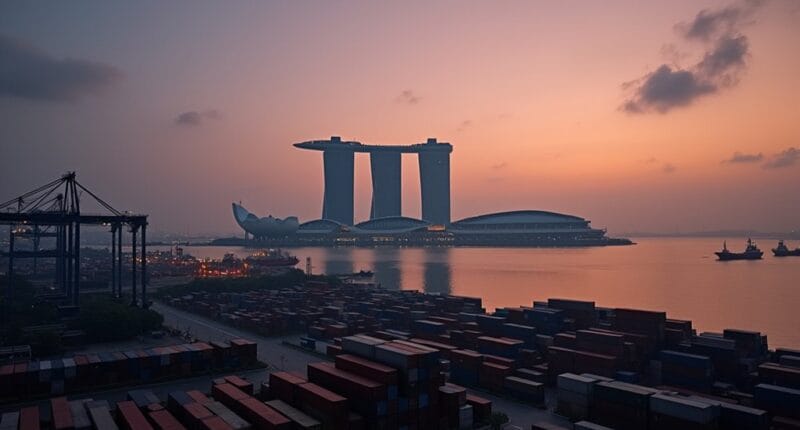Singapore’s economy is taking a beating as the US-China trade war wreaks havoc on global markets. Growth forecasts for 2025 have been slashed to a measly 0-2%, down from earlier projections of 1-3%. With astronomical tariffs hitting 145% and foreign investors getting cold feet, the trade-dependent nation faces serious headwinds. Jobs are vanishing, wages are stagnating, and the government’s scrambling to stabilize things. The full impact of this economic storm is still unfolding.

Uncertainty grips Singapore’s economy as the US-China trade war takes its toll. The Ministry of Trade and Industry has slashed its 2025 GDP growth forecast to a measly 0-2%, down from the previous 1-3% outlook. It’s quite the stumble from 2024’s robust 4.4% growth, and Q1 2025’s slowdown to 3.8% isn’t helping matters.
The US-China tariff spat is hitting Singapore where it hurts most – right in the exports. With tariffs soaring to a jaw-dropping 145% on major goods, it’s no wonder international trade flows are in disarray. Singapore’s prized electronics and precision engineering sectors are watching demand evaporate faster than a raindrop in the desert. The US has implemented a baseline 10% tariff on all countries, making the situation even more challenging.
Singapore’s trade-dependent economy staggers as crushing US-China tariffs of 145% send electronics exports into a devastating nosedive.
The Monetary Authority of Singapore isn’t sitting idle while the storm rages. They’ve loosened monetary policy twice in a row – a clear sign they’re worried. Core inflation expectations? Down. Exchange rates? Adjusted. It’s like watching a careful dance to keep the financial system from tripping over its own feet.
Foreign investors, usually keen to pour money into Singapore’s bustling economy, are now playing it safe. Who can blame them? With protectionist policies popping up like mushrooms after rain, multinational corporations are thinking twice about expanding in Asia. Some businesses are even packing their bags and relocating, taking jobs with them. Deputy Prime Minister Heng Swee Keat has urged citizens to avoid fearmongering during these uncertain times.
The labor market is feeling the pinch too. Trade-dependent industries are shedding workers, wage growth is slowing down, and manufacturing and logistics jobs are looking shakier than a house of cards. It’s the mid-skilled and low-skilled workers who are really caught in the crossfire.
Singapore’s heavy reliance on trading partners like the US and China isn’t doing it any favors right now. The entire region is feeling the heat as supply chains get tangled in this messy trade war.
Sure, there are efforts to strengthen regional trade agreements, but when the world’s two biggest economies are throwing economic punches, everyone gets a black eye.





